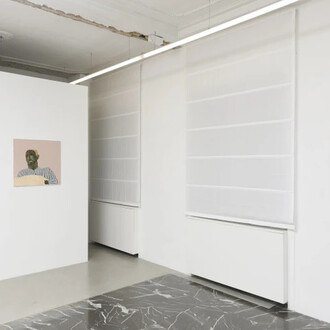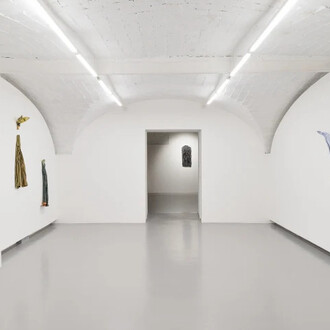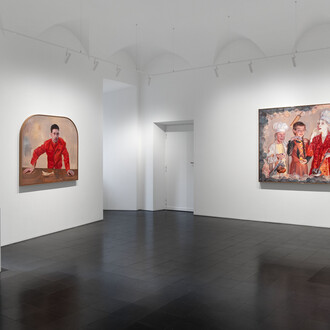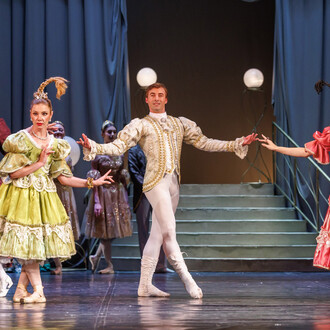Entitled like a cut-up or découpé and held together by the format of the exhibition, this series momentarily takes the shape of a single piece before facing a future of separation, distance, and reconfiguration. Repetition points to a continual process of becoming within this new series of monochromatic works in which the hand sets the scale for the world through visceral gestures and imprints. These gestures break away from the idea of gesture as mark-making or the desire to leave an individual stamp, and instead, integrate transparency and material interaction through an intimate act of discovery. Sewn finger holes create an opportunity to think about entering the picture plane— entering an image… trying on and wearing an image. These paintings are sincere reminders that surface and image are a construct. Improvisation and evidence of the hand become a means to recall authorship as a fictive process, a search for an image— groping and slipping into being.
In “The Order of Time”, Carlo Rovelli dissolves time as we have understood it and suggests alternatively, that time can be better understood starting from the structure of our brain and emotions than from the physical universe. He suggests that we cannot fully or adequately define time because “we do not have the grammar for it”. Mahinay sees abstraction as a space for approaching these unknowns. Not having the grammar is a clue for growth. Uncertainty is a signifier for the possibility of discovery and reinvention. Here are the places where we find opportunity for forming new neural-networks. The borderland between abstraction and figuration offers a place to explore the boundary between self and other and tenderness for humanity’s condition of shared incompleteness.
















